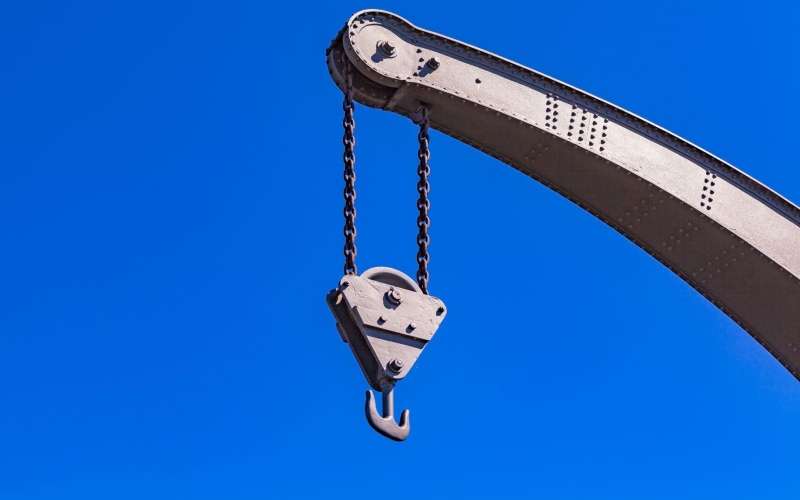Crane scales might not be something you think about daily, but they are crucial in various industries. From construction sites to shipping docks, these handy devices help workers precisely measure the weight of heavy loads. But have you ever stopped to wonder how crane scales actually work? Let’s break it down in a simple, easy-to-understand way.
The Basics of a Crane Scale
At its core, a crane scale is a device that combines a load cell, electronics, and a display to measure and show the weight of an object. Think of it as a digital version of the old-fashioned hanging balance scales with much more sophistication and accuracy. These scales are designed to withstand the enormous weights they measure, often ranging from a few hundred kilograms to several tons.
How Do They Measure Weight?
The magic of a crane scale lies in the load cell, which is the device’s heart. When a heavy object is hooked onto the crane scale, it applies force to the load cell. This force causes the load cell to bend or deform slightly. Don’t worry – this bending is tiny, often just a fraction of a millimetre, and the load cell is designed to handle it without breaking.
Inside the load cell, there are components called strain gauges. These are tiny, sensitive pieces of metal that can detect even the smallest changes in shape. As the load cell bends, the strain gauges measure this deformation and convert it into an electrical signal. The more the load cell bends, the stronger the electrical signal becomes.
Turning Signals Into Numbers
The electrical signal generated by the load cell doesn’t mean much. That’s where the electronics inside the crane scale come in. These electronics process the signal and translate it into a weight value you can read on the display. Think of it like a translator, converting a foreign language into something you can understand.
Modern crane scales often come with digital displays, making it easy to see the weight. Some even have wireless connectivity, sending the data to a smartphone or computer for further analysis. These features are especially helpful in industries like logistics and manufacturing, where accurate weight measurements are critical.
Built Tough for Tough Jobs
One of the standout features of crane scales is their durability. These devices are built to withstand harsh environments, whether the intense heat of a steel mill or the salty air of a shipping port. The materials used to make crane scales, like stainless steel or high-strength aluminium, are chosen for their ability to resist corrosion and damage. Even in challenging conditions, you can count on them to provide reliable measurements.
Another important feature is the safety factor. You want to be confident that the crane scale won’t fail when lifting heavy loads. That’s why they undergo rigorous testing to ensure they can handle weights far beyond their rated capacity. It’s all about peace of mind for workers and operators.
Fun Fact: Hanging Scales vs. Crane Scales
You might hear the term “hanging scales” used interchangeably with crane scales. While they’re similar in concept, there are differences. Hanging scales are generally smaller and used for lighter loads, like weighing bags of produce at a market. On the other hand, Crane scales are designed for heavy-duty tasks and can handle much larger weights. Both play important roles, but they’re built for different jobs.
Advances in Technology
Like many tools, crane scales have benefited from advancements in technology. Today, many models come equipped with Bluetooth connectivity, allowing users to monitor weights from a distance. Some even have built-in memory to store measurements, which is handy for keeping records.
Another exciting development is the use of smart sensors. These sensors can detect weight and other factors like tension and balance. This additional information can be invaluable in industries like construction, where precision is critical.
Choosing the Right Crane Scale
If you’re in the market for a crane scale, there are a few things to keep in mind. First, consider the maximum weight you’ll need to measure. It’s always better to choose a scale with a capacity slightly higher than your heaviest load. Next, think about the environment where you’ll be using it. Will it be exposed to extreme temperatures or moisture? If so, look for a model with appropriate protective features.
Finally, don’t forget about accuracy. Not all crane scales are created equal, and the level of precision can vary. For industries where even a small discrepancy can have big consequences, investing in a high-quality scale is worth it.
Wrapping It Up
Crane scales might seem like simple tools, but there’s a lot of science and engineering behind them. From the strain gauges inside the load cell to the tough materials used to build them, every part of a crane scale is designed with precision and durability.
If you’re curious about high-quality hanging or crane scales, check out trusted suppliers like Meltrons Australia. They’re helping industries across Sydney and beyond get the accurate measurements they need to keep things running smoothly.
